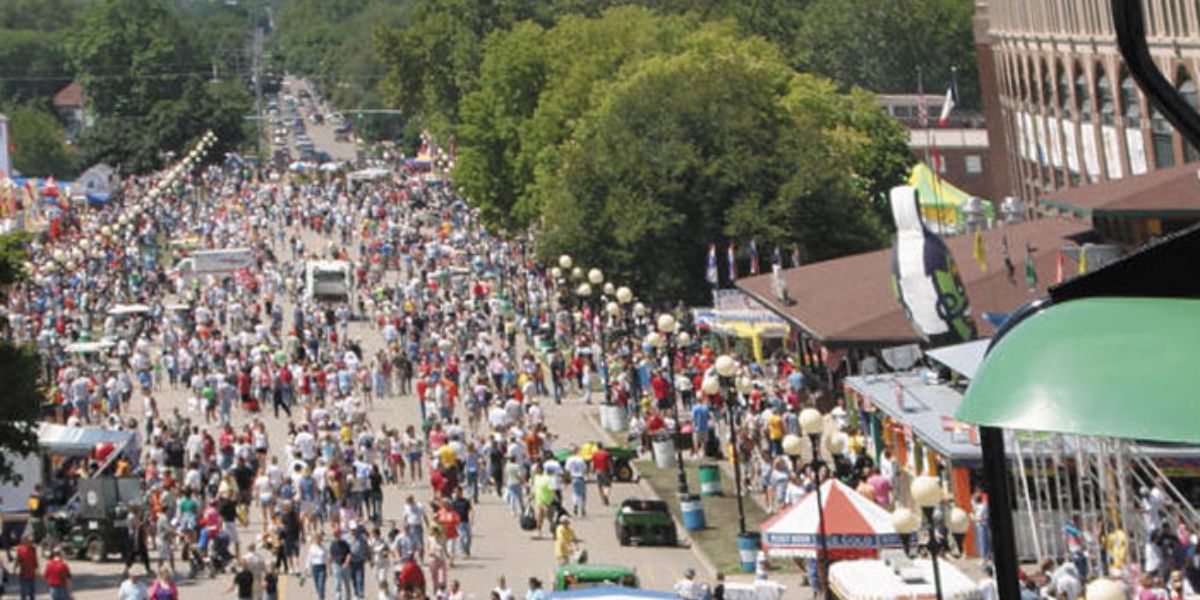Arkansas possesses a varied geography and culture, accompanied by notable challenges in population growth and development. Despite certain counties in the state witnessing substantial population growth, others, particularly in rural areas, have faced significant declines.
This article aims to delve into the five Arkansas counties characterized by the most pronounced population decline, based on the most recent census data.
Phillips County
Phillips County is situated in the eastern region of Arkansas, bordering the Mississippi River. It holds the unfortunate distinction of experiencing the highest population decline in the state, with a staggering -31.01% decrease since 2010. The current population stands at 15,011, a notable drop from the 2010 figure of 21,757.
The county seat is Helena-West Helena, the largest city within Phillips County. Despite its historical and cultural significance as the birthplace of blues music and the backdrop for various Civil War battles, the county grapples with significant challenges. These include issues like poverty, unemployment, crime, and a lack of essential infrastructure and services.
Read More: Exploring the 5 Counties in Louisiana With the Most Rapid Population Decline
Lee County
Lee County, situated in the eastern region of Arkansas and adjoining Phillips County to the north, has experienced the second-highest population decline in the state, registering a decrease of -22.74% since 2010. The current population of Lee County is 8,054, down from 10,424 in the year 2010.
The primary city and county seat, Marianna, are noteworthy for their agricultural output and historical landmarks. Additionally, Lee County boasts the presence of the St. Francis National Forest, providing recreational possibilities and picturesque landscapes.
Read More: This Alaska City Has Been Named as the Fastest Growing City in the State
Lafayette County
Lafayette County, situated in the southwestern part of Arkansas near the Texas and Louisiana borders, has experienced a notable decline in population, ranking third-highest in the state with a decrease of 22.75% since 2010. The current population stands at 5,906, down from 7,645 in 2010.
The county’s primary hub is Lewisville, serving as both the county seat and the largest city. Lewisville, a small town, is characterized by its historic courthouse and a limited number of businesses. Lafayette County is predominantly rural and agricultural, featuring some oil and gas production.
Additionally, the county boasts cultural and natural attractions, including the Arkansas Museum of Natural Resources and Lake Erling.
Read More: This City Has Been Named the Poorest City in Arkansas
Monroe County
Monroe County, situated in the eastern part of Arkansas and sharing its southern border with Lee County, has experienced the fourth-highest population decline rate in the state, standing at -21.54% since 2010. The current population of Monroe County is 6,394, reflecting a decrease from 8,149 in 2010.
Clarendon serves as both the county seat and the largest city, boasting historical significance as a river town. Among its attractions are the Monroe County Museum and the White River National Wildlife Refuge. Noteworthy for duck hunting and fishing opportunities, Monroe County is also recognized for its rice and soybean production.
Read More: Exploring the 5 Counties in Tennessee With the Most Rapid Population Decline
Dallas County
Dallas County, situated in the south-central region of Arkansas, near the Ouachita Mountains, has experienced the fifth-highest rate of population decline in the state, standing at -26.16% since 2010. The current population of Dallas County is 5,993, a decrease from 8,116 in 2010.
The county’s primary city and seat is Fordyce, a small town offering limited amenities, including the Dallas County Museum and the Fordyce Country Club. Dallas County is predominantly rural and wooded, with a presence of timber and poultry industries.
While the county boasts historical and recreational attractions like Marks’ Mill Battlefield State Park and Moro Bay State Park, it grapples with challenges such as high unemployment, slow growth, limited diversity, and inadequate infrastructure.
Read More: Exploring the 5 Counties in Louisiana With the Most Rapid Population Decline
Conclusion
Arkansas exhibits divergent trends in population changes, marked by notable growth in certain counties and significant decline in others, particularly in rural regions.
The state’s most rapidly shrinking counties—Phillips, Lee, Lafayette, Monroe, and Dallas—face common issues like low income, limited education, high poverty, elevated crime rates, and insufficient development. These areas also possess distinctive characteristics, including unique histories, cultures, natural attributes, and industries.
These counties demand increased attention and support not only from state and federal authorities but also from private enterprises and nonprofit organizations. Collaborative efforts are essential to tackle the challenges these counties face and enhance their overall quality of life.












Leave a Reply